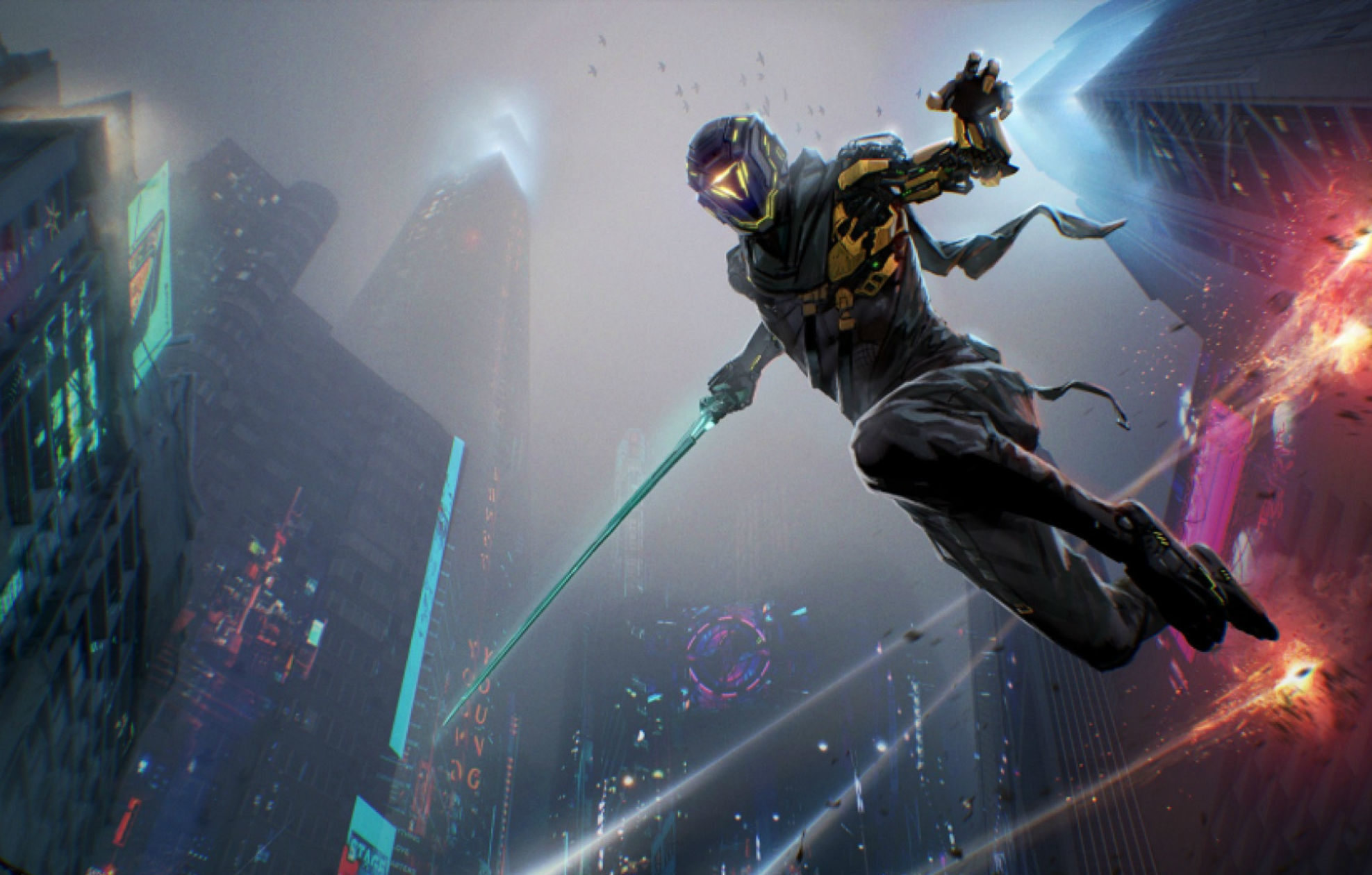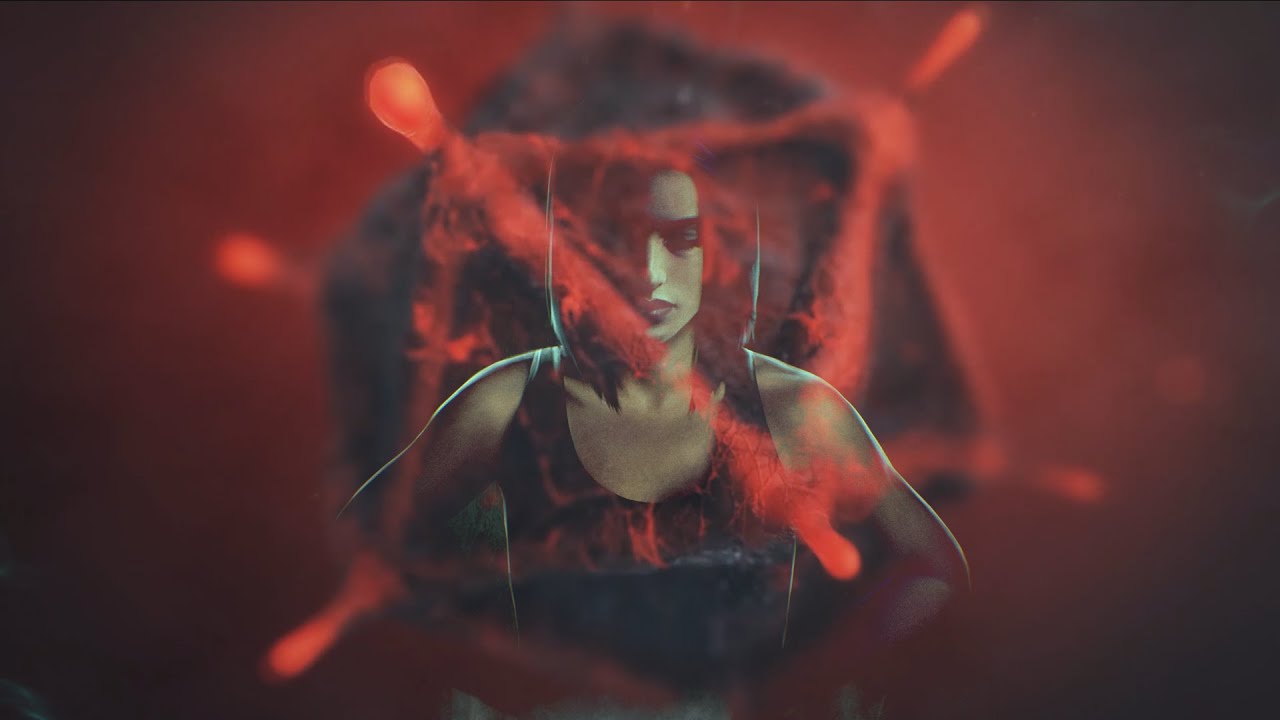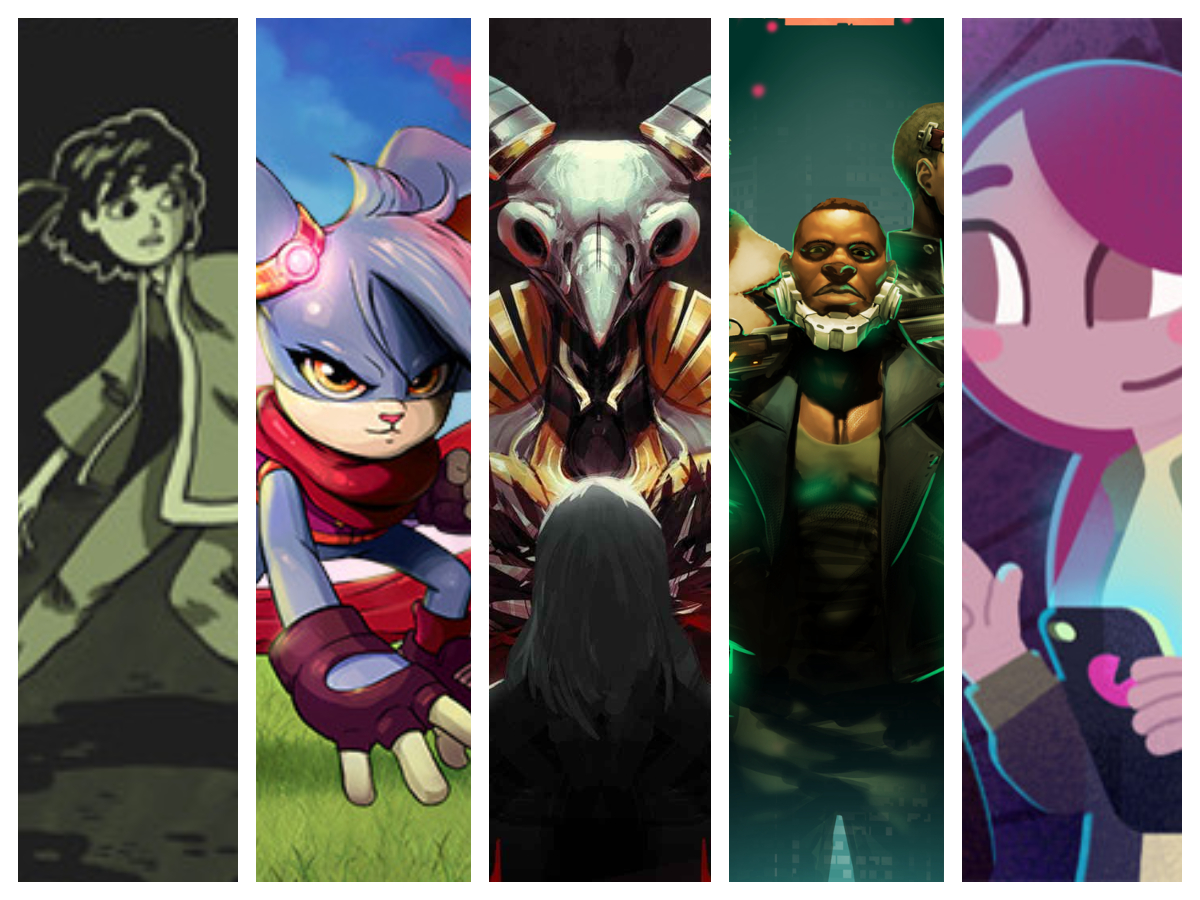Ghostrunner Review (PS5) – Blade Wallrunner
The one-more-go, quick-fire action game has become a staple of my diet. What started with Hotline Miami eventually progressed into new joints to gorge on. Next came Furi, Hong Kong Massacre (check that out, too) and Ruiner to fill the indie gap. But what about big, show-stopping, next-gen beasts? That’s where Ghostrunner comes in.
A fast-paced cyberpunk-ian runner/slasher, Ghostrunner is great when it gets going. It’s got that slickness and appeal to it, especially now on the next generation of consoles (and updates). Wallrunning over enemies and slicing them in twain to a Daniel Deluxe soundtrack is nothing short of pure glee.
However, the cost of victory comes with a price. The cost of a PlayStation 5 (or equivalent platform) controller, to be precise. For everything that Ghostrunner does right, there’s an undercurrent of frustration throughout. Let’s explore the Cybervoid and unlock my elaborate point, shall we?
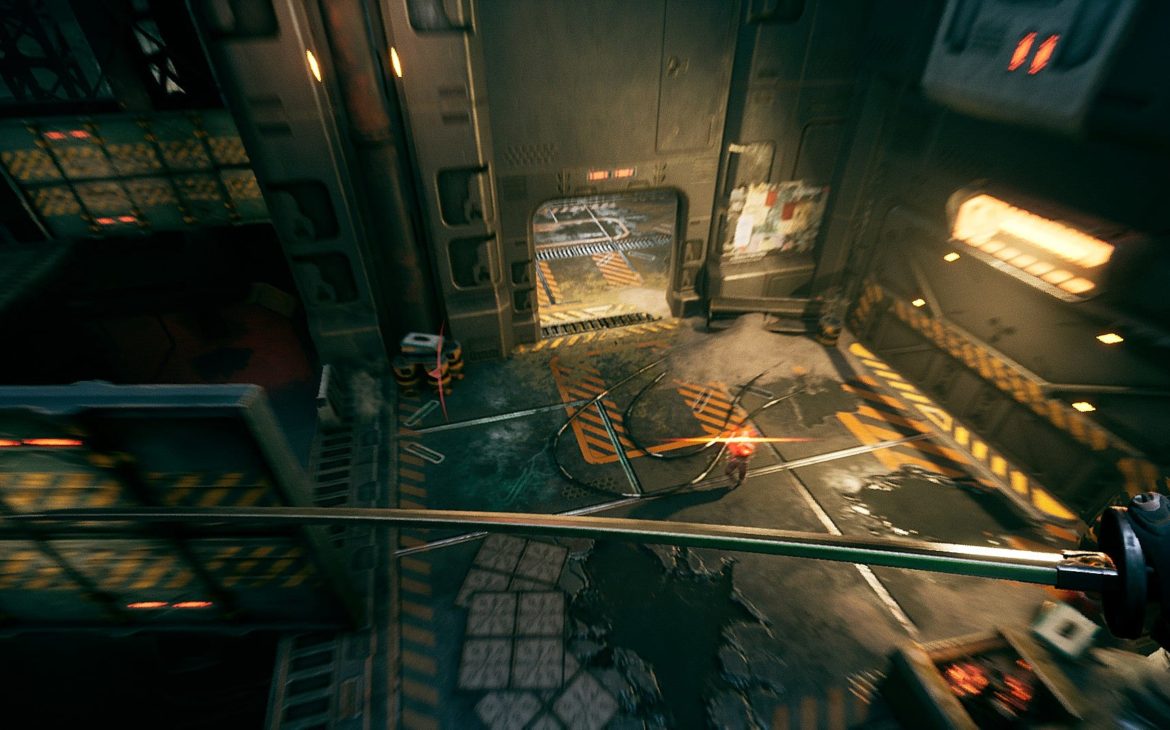
The Future Is Bright
If the word “cyberpunk” has any resonance with you, then you’ll know what to expect with the decor. Corporate rule, low-level slums and a constant neon hum build the world of Ghostrunner. You, the titular runner, are tasked with making your way up one such megastructure, the Dharma Tower. It’s a bit on the nose with its “poverty below, greed at the top” metaphor but we’ll roll with it.
Waking, or rebooting, as a cyborg, players get a whisper in their ear… from a voice named Whisper. Again, on the nose. Armed with quick wits, quicker feet and a very sharp sword, our hot-footed hero is sent to retrieve one careless Whisper from imprisonment.
That’s just the tip of iceberg, though, as events at play are much larger than anticipated. For one, Whisper’s not a man, but an AI construct.

I Am Jack’s Sense Of Revenge
Calling himself the Architect, the former-Whisper explains what’s really going up at the tower. As a human, he and partner Mara ran Dharma Tower, creating the Ghostrunner units as a means to police the tower and assert dominance. But, as is the nature of things, partnerships dissolve.
Mara betrayed Adam, who’d backed his conscience up in digital form. The Ghostrunners were utilised as part of a coup, but were unfortunately destroyed… except you. Found by a resistance group known as the Climbers, they dub you Jack and fix you up to strike back at Mara. Except she’s not Mara anymore, she goes by “the Keymaster” now and wears a functional Doctor Octopus suit instead.
Rebuilt by the Climbers and dubbed Jack, our protagonist frees the Architect and is sent to take Dharma Tower back. Naturally, the Architect doesn’t like the Climbers, tells you his way is correct and that Jack has no reason whatsoever to distrust him. I won’t spoil, but it’s not the most original of stories.
However, it doesn’t have to be the Chinatown of narratives when it plays as it does.
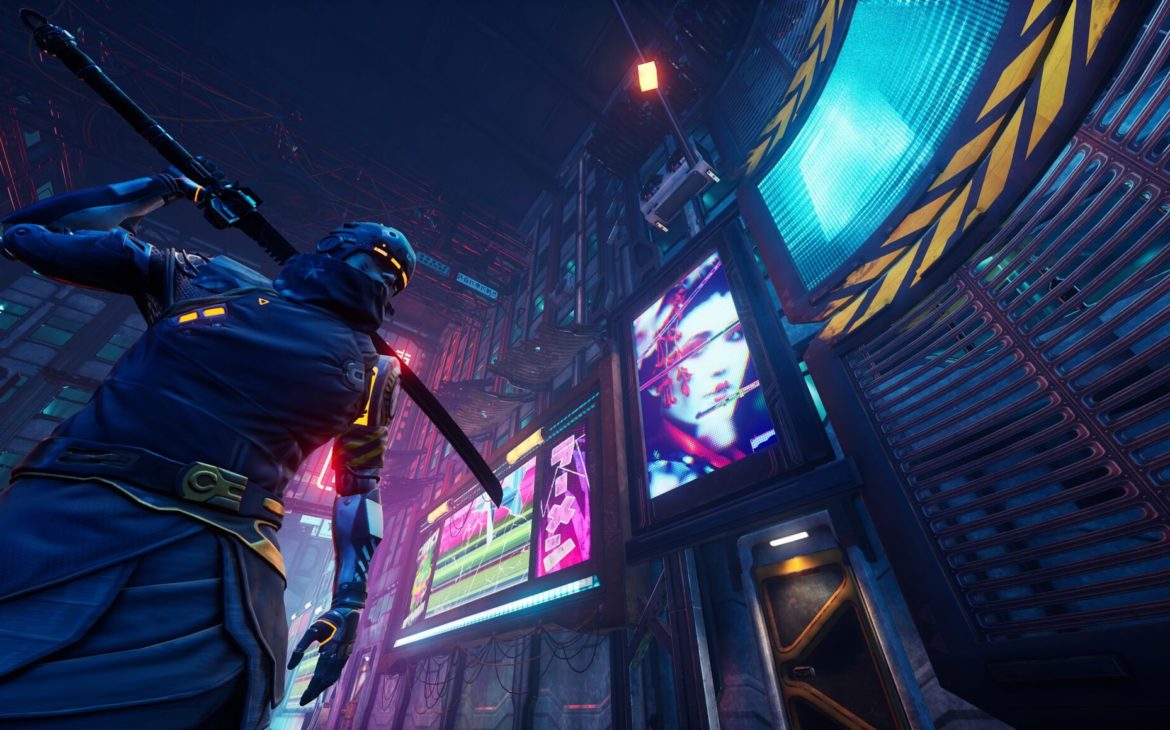
To The Top
So how is our cyber-suited and rebooted Ghostrunner going to make his lofty ascent through Dharma Tower? By running, jumping, hookshot-ing and more importantly slicing his way through legions of the Keymaster’s goons. In first person, no less, to add to the sheer difficulty that lies within. In Layman’s terms, think Mirror’s Edge with a huge dose of cyberpunk DLC for aesthetics.
As Yazz bellowed at us in 1988, the only way is indeed up. Players are tasked with quite literally climbing Dharma Tower, starting from the slum-like lower levels right up to the fancier, Elysium fields-esque environs afforded to the wealthy. See, I told you the rich/poor metaphor was so very obvious here.
Jack can run, surprisingly enough, and will gain speed if players can keep him on a constant, smooth run. Point him at a wall in a diagonal(ish) manner and jump onto it to wallrun. So far, pretty straightforward. Adding verticality into the mix with the electric rope lasso thing, progress comes from hop, skip and jumping your way both through platforming and combat.
Both are fiddly in themselves (we’ll get to the negatives in a bit), but the former is an exercise in frustration against yourself. The latter, however, is where both the fun and the need to create new swearwords comes in.

Slice Or Die
I mentioned in my Severed Steel review that it borrowed elements from Ghostrunner. If you haven’t read that one (and shame on you), allow me to elaborate: Ghostrunner uses wallrunning and close quarters combat as its bread and butter. The embodiment of dying-and-trying repeatedly, the objective here is to get nice and personal with the Keys (Mara’s guards) before cleaving them apart. Although, there is an option to turn gore off and merely smack them about, for those who prefer that.
At his disposal, Jack has his blade, electro-lasso thing and nimble feet. Well, to begin with. Utilising these, the player is tasked with avoiding bullets whilst closing the distance and slicing away. A little mini-map will tell you if they are any enemies about, and more often than not progression is withheld until all are dead.
As you climb, the standard of enemy improves too. There are Keys that can leap and smack you down, even out of the air. These require some deft dodging, which when combined with bullet-firing enemies, becomes a puzzle in itself. Further on, front-facing shield enemies appear, and I’m sure you can imagine what you have to do with them. But for me, it was the beefed up ED209’s that fire a wall of plasma that had me wanting to quit the game.
When it works, it works well. Much like similar one-hit kill action games, it becomes a puzzle. Trying one route of attack, only to get smacked down repeatedly and attempting another is great when you nail it. Dying and restarting thirty times in a row, however, doesn’t hold the same appeal.
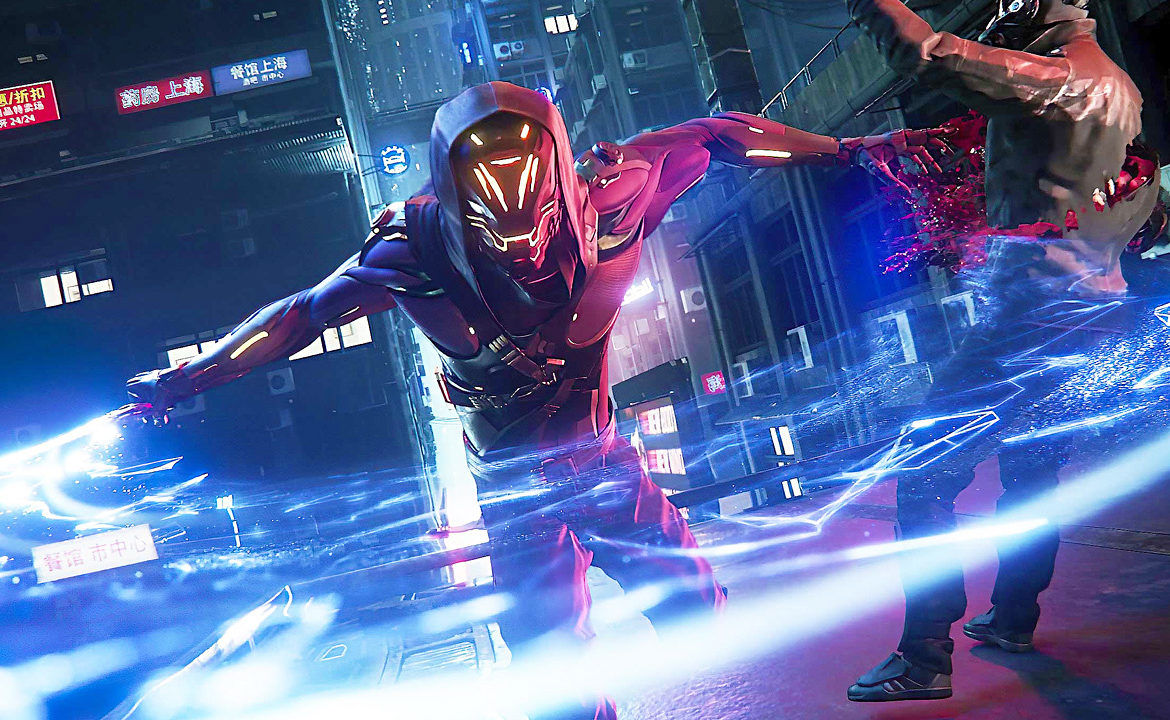
The Upper Robotic Hand
Fortunately for Jack, the Architect guiding him and Zoe, the Climber in his other ear, he does gain some combat advantages via the Cybervoid. This digital realm, which allows the Architect to mess about with Jack’s systems, plays like the terrible 3D realm in the video game adaptation of The Lawnmower Man. Horrible platforming and all.
There are “powers”, if you will, that Jack can use in battle. The first you get, Blink, is somewhat similar to its Dishonored counterpart: line up three enemies and watch as Jack glides through them in a flash. Handy in a pinch, but be mindful if there’s a fourth lurking. Same with Tempest, an Iron Man-esque palm blast that can hoof enemies afar, as well as return projectiles.
Each of these skills has a cooldown bar, as well as a rudimentary upgrade system that can be swapped out at any time. Unlike most games that have a skill tree, Ghostrunner has Tetris, in that upgrades come as block-like shapes that can be rotated and inserted onto a grid. The better the skill, the bigger the pseudo-Tetromino, so you can’t just whack all the top-tier ones in from the go.
As time goes on, more of the skill grid space will unlock, allowing players to carry more upgrades at once. Ranging from shorter cooldowns to larger Blink capture areas, it allows some creativity in play style. Yet otherwise, it essentially boils down to “slice the dudes in half, don’t stop moving”.
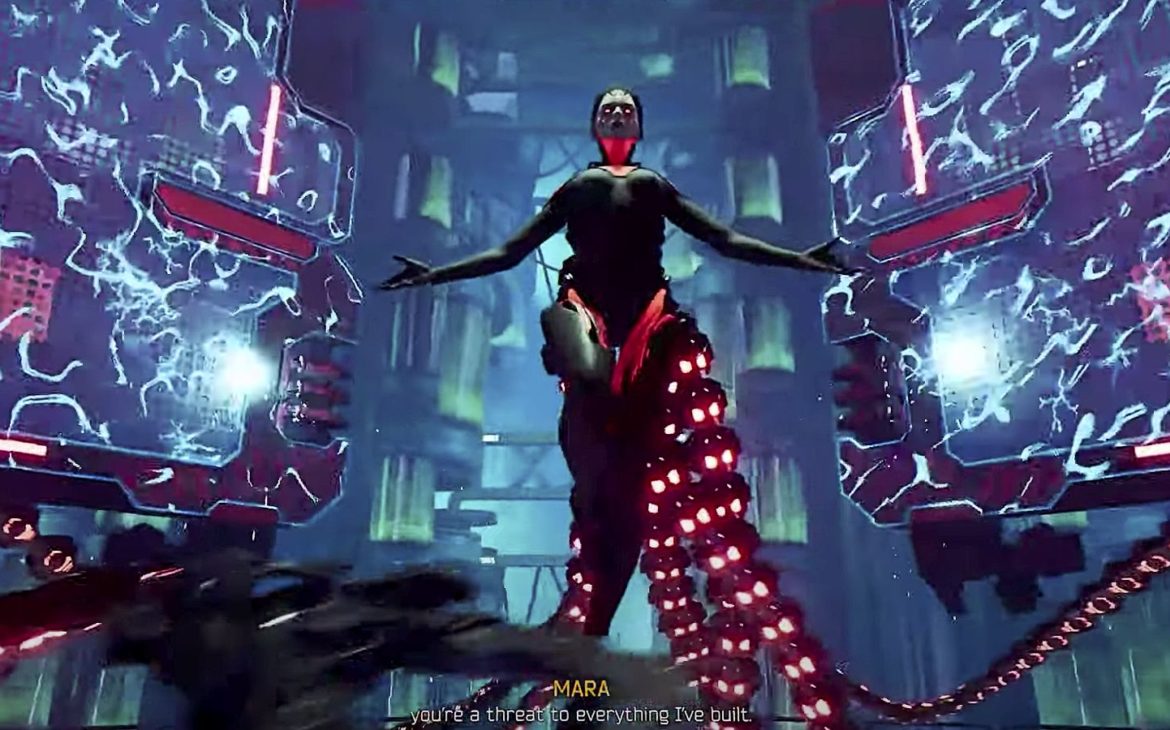
Bringing A Sword To A Gun Fight
Which leads me straight into addressing the cyber-elephant in the room: first person melee combat isn’t fun when you’re the only one doing it. Okay, bar a few close range enemies and boss battles, but you know what I mean. The point I’m getting as that in first person, you only get one view: your own, forwards.
So whilst the sense of immersion is great for the vertical platforming and swordplay, it’s very hard to keep track of bullets coming at you. And while it’s great to be able to dodge mid-air to avoid one enemy’s shots, the cooldown won’t let players evade another in quick succession. The emphasis is on constant moving and quick-paced action, which can bite players in the arse if they stop to figure out where to jump to.
The other massive bugbear that annoyed me is the platforming sections outside of combat. I know we’re ascending a tower, but why are there bottomless voids and so many massively exposed hazards? I understand that were it in its pre-ruined state, it would be a breeze, but there has to be some give. Dying countless times because of a jump a smidgen too early, or a randomly exposed electrical field or smelted iron block isn’t fun. It’s a lesson in attrition, akin to banging one’s head on a wall in the hopes that it will eventually break.
But the most egregious of brain-ache inducing “puzzles”? The cyber-shurikens that require precision and sequenced timing. Whilst wallrunning, above insta-kill pits that if you fail, you fall into and have to quick restart from. Maybe it’s me, older and less reactive, or perhaps some will prefer mouse and keyboard aiming and nail them first time. Either way, I know there’s a trophy for not dying in a level that I know I won’t be unlocking.
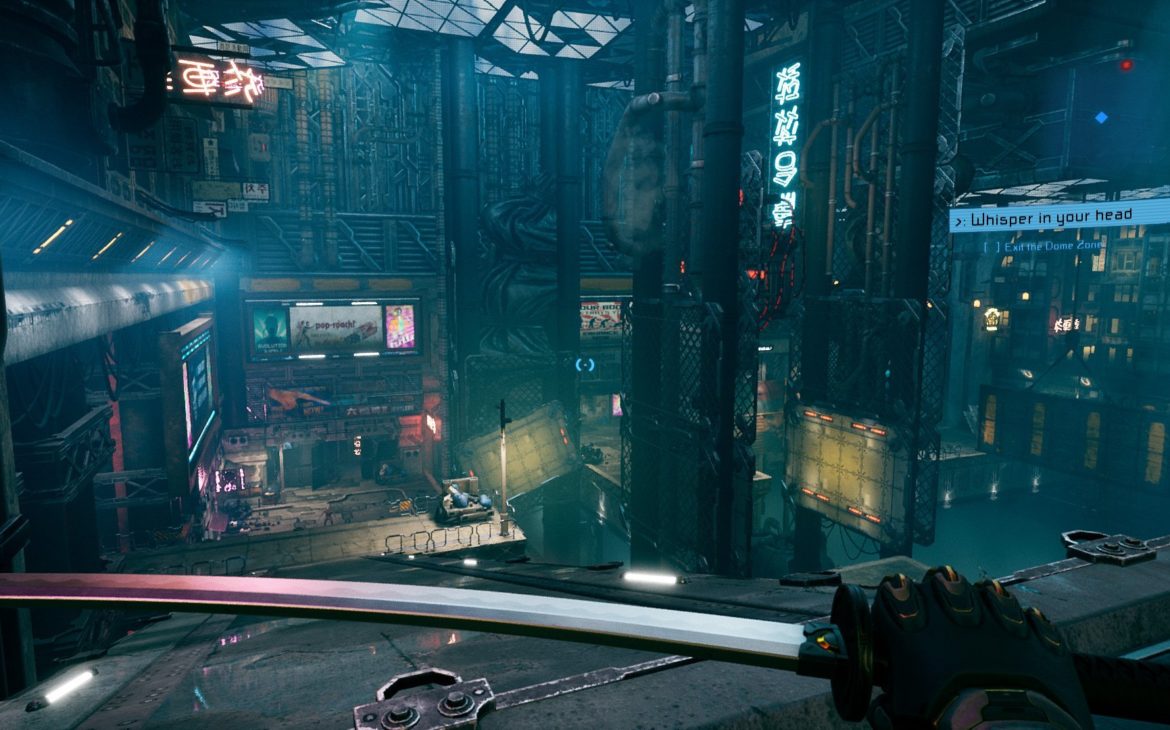
Free Your Mind
However, don’t let my negative experiences with Ghostrunner taint your opinion of the overall view. As I say, that I fall off of seemingly obnoxious platform sections and get shot a lot isn’t an indictment of the game itself. It’s just that I personally will never be speedrunning this game.
If you’re also reading this, thinking that I’ve made it sound like a linear experience… well, it is. That is to say, the campaign is. But it’s not without its extra dalliances. There are collectibles to find, such as artifacts about the old world that add backstory. Search that little bit harder, though, and you can find some nifty sword skins too. Purely cosmetic, mind, but it’s nice to kit your blade out as you wish.
Outside of the story mode there are some extras. Firstly, the Assist Mode: as it sounds, it lowers the difficulty a smidgen to cater for those that need help. I’m not ashamed to admit I used it. Conversely, you can unlock a harder mode upon completion, you mentalists.
And lastly, there’s a Wave Mode. Again, as it sounds, players will keep Jack alive for twenty increasing difficult stages for the sheer glory and bragging rights. Or die on something like wave five, like I did.

If At First…
In summary, Ghostrunner is hard but not impossible. It’s not without its challenge, but it doesn’t shy away from it. It literally tells players at the start menu that it’s a tough game, hence Assist Mode. Going in knowing that takes the edge off somewhat, yet players should still brace themselves for a try-and-try-again mentality.
I had fun with Ghostrunner, but it wasn’t all smooth sailing. As with any of the examples I’ve made before, the frustration is outweighed by the sweet satisfaction of clearing a room or nailing a tricky climbing section. Then, you brace yourself and do it again until end of game, with scaling difficulty curve.
If you can abide by that, then this will be for you. Coupled with the excellent synthwave score and gorgeous visuals (which have been improved from the rocky PS4 version), I would consider this the “complete” version of Ghostrunner. I played the PC version last year and it looked good then, and bar the technical jargon, I am more in love with the PlayStation 5 update.
So get comfy, turn your television up and drink in the beautiful future atmosphere, yet also brace yourself for some of the most enjoyably frustrating gameplay ever.
It may have a half-baked premise, but don’t let that put you off of Ghostrunner. The gameplay far outweighs it, and once you get your head in the game, it’s so utterly rewarding. Hard, yes, but oh so incredible when you grasp it. Lose yourself in the visuals and synthwave as you rise to the top.

Ghostrunner is available now on PlayStation 4 and 5 (reviewed on latter), Xbox One and Series S|X, PC and Nintendo Switch.
Developer: One More Level, All In! Games
Publisher: 505 Games
Disclaimer: In order to complete this review, we were provided with a promotional copy of the game. For our full review policy, please go here.
If you enjoyed this article or any more of our content, please consider our Patreon.
Make sure to follow Finger Guns on our social channels –Twitter, Facebook, Twitch, Spotify or Apple Podcasts – to keep up to date on our news, reviews and features.
